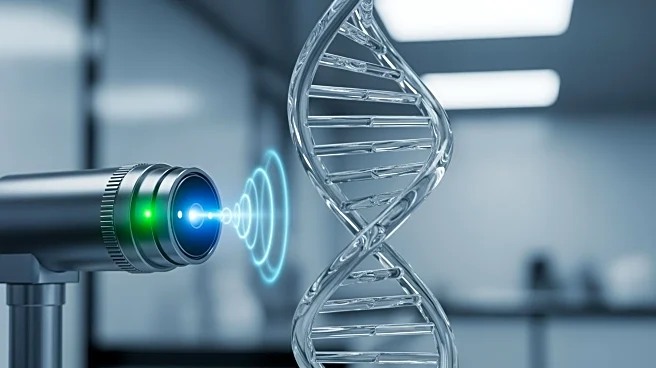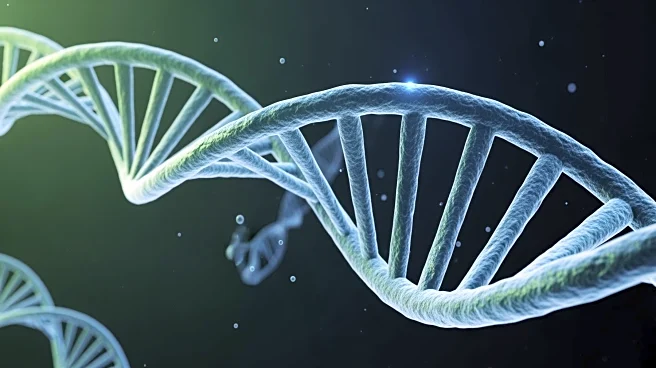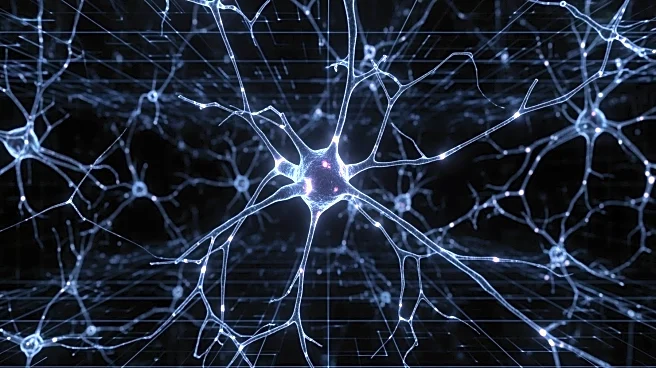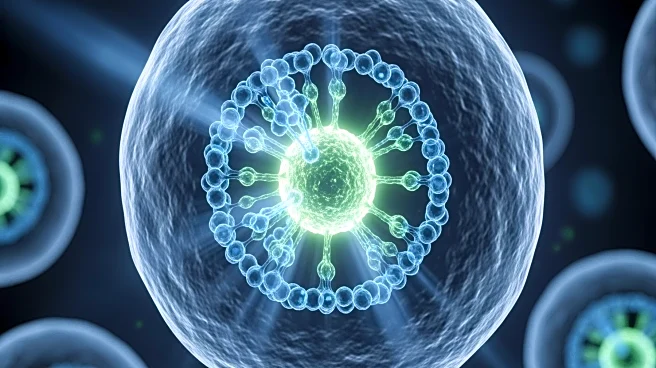What's Happening?
Researchers at Utrecht University have developed a groundbreaking fluorescent sensor that allows scientists to observe DNA repair processes in real time. This innovative tool, detailed in a study published
in Nature Communications, utilizes the tandem BRCT domain of the protein MCPH1 to bind briefly to the histone mark γH2AX, which appears at sites of DNA double-strand breaks. By attaching a fluorescent tag, the sensor illuminates DNA damage without interfering with the cell's repair mechanisms. This advancement provides a dynamic view of cellular responses to DNA damage, overcoming previous limitations of static snapshots offered by antibody-based methods. The sensor's rapid association and dissociation enable researchers to track the kinetics of repair, offering insights into how damage foci form and resolve over time.
Why It's Important?
The development of this real-time DNA damage sensor is significant for several fields, including cancer biology, drug safety testing, and aging research. By providing a more accurate depiction of DNA repair processes, the sensor could lead to improved understanding of how cells respond to genotoxic stress, which is crucial for developing therapies that target DNA repair mechanisms. This tool could also enhance the study of diseases linked to DNA repair deficiencies, such as cancer and neurodegeneration. Furthermore, the sensor's applicability in living organisms, demonstrated in experiments with the nematode C. elegans, suggests its potential for broad use in biological research beyond cell cultures.
What's Next?
The Utrecht team plans to make the sensor openly available to accelerate discoveries across various research fields. This could lead to advancements in cancer treatment strategies that rely on inducing DNA damage in tumor cells, as well as aging studies focusing on repair capacity. Researchers may explore the sensor's use in other organisms and contexts, potentially uncovering new insights into DNA repair processes and their implications for health and disease.
Beyond the Headlines
The ethical implications of this research tool are noteworthy, as it could influence the development of therapies that manipulate DNA repair processes. Understanding the natural dynamics of DNA repair could lead to more targeted and effective treatments, reducing the risk of unintended consequences associated with current methods. Additionally, the sensor's ability to provide real-time data may shift research paradigms, encouraging more dynamic and integrative approaches to studying cellular processes.












